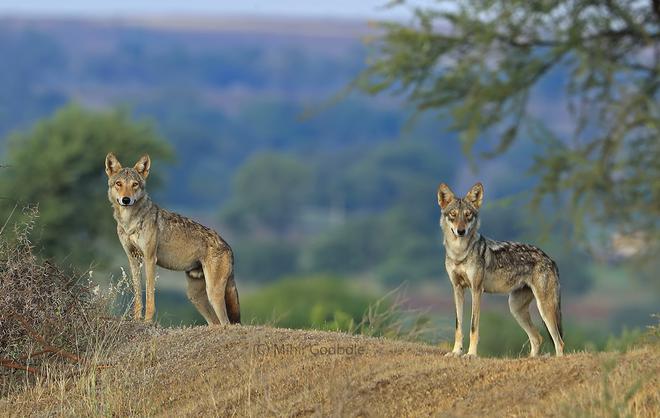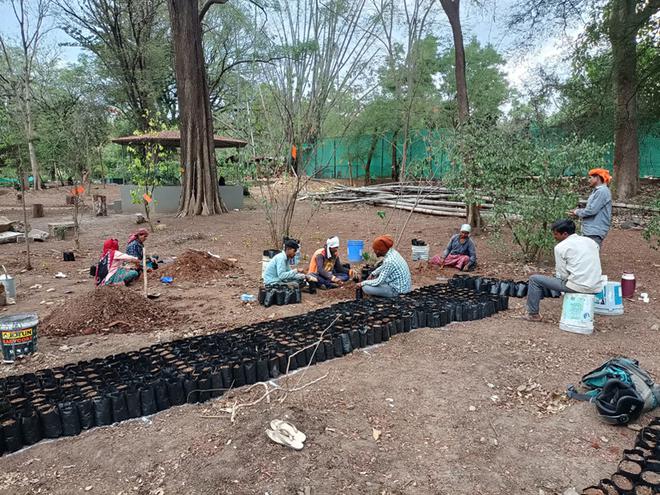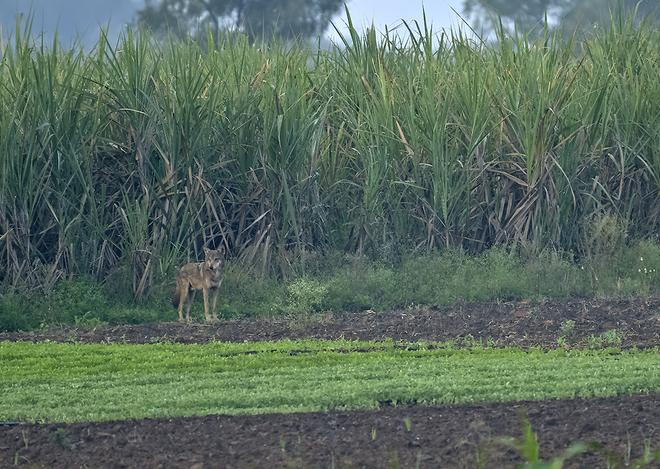As grasslands in India continue to battle a perception problem, the seeds of which were sowed by the British who classified them as wastelands, a project in Pune, Maharashtra is quietly paving a new path for conservation of these open natural ecosystems.
Pune-based The Grasslands Trust (TGT) and Bengaluru-based Ashoka Trust for Research in Ecology and the Environment (ATREE) are in the process of developing a pilot site to exhibit a working model for grasslands restoration.
The Grasslands Trust was started with a focus on the conservation of the biodiversity of open savannah grasslands in and around Pune. Mihir Godbole from TGT said the Trust was working with ATREE on the GPS-collaring of wolves and other carnivores when the team began to realise how degradation of grasslands was causing an imbalance in the ecosystem.

Open natural ecosystems
The entirety of central Maharashtra is predominantly grasslands, or what may more accurately be termed as Open Natural Ecosystems (ONEs), making the region ideal for the pilot site of the project. “These grasslands harbour a few endangered species, such as the Great Indian Bustard and lesser florican, and many Schedule 1 species under the Wild Life Protection Act, such as the Indian Grey Wolf and Indian Gazelle, making them hotspots for unique biodiversity,” he said.
Work on the project so far has included baseline surveys on the site to measure social and ecological parameters, as well as focussed group discussions with residents and key stakeholders to understand their perceptions of, and their needs from, the grasslands.
“Moving forward into the implementation stage, we have started the development of native grass plantations, as well as nurseries for native grasses, and the demarcation and protection of certain grass patches. We are beginning work on introducing a rotational grazing system, which is important for the project’s sustainability,” said Anuja Malhotra from ATREE.

Ironically, the first challenge they faced was selling the idea to key stakeholders and CSR fund managers of restoration that does not involve large-scale tree planting, apart from logistical constraints in terms of availability of grass seeds and saplings for planting.
Asked about the sustained lack of importance given to non-forested ONEs, Abi Tamim Vanak of ATREE explained that the colonial British government was more interested in forests for timber extraction and production. “ONEs were, therefore, considered worthless, or wastelands. Early British naturalists and botanists even declared that there were no natural grasslands in India. This view, of course, is erroneous as modern studies have found that Indian grasslands and savannas originated several million years ago,” he said.
At present, contradictions between various policies of the government is a challenge. “For example, the government has set ambitious targets to green wastelands through mass afforestation programmes. These are primarily savannah grasslands in peninsular India. Fifty years of tree plantation in these grasslands has yielded abysmal results. On the other hand, the government of India does recognise that grasslands are important for the protection of critically endangered species, such as the Great Indian Bustard. The reintroduction of the cheetah in India was also, ostensibly, to highlight the importance of grasslands,” he said.
Negative biases, and forcing our imagination on the natural landscape
The use of terms such as desertification to indicate degradation creates a negative bias towards desert ecosystems that are the product of the climate of the region, he pointed out, adding that efforts to green the desert are as harmful for the desert ecology as cutting down trees in a forest.
“We need to stop forcing our imagination of what the landscape should look like, and instead promote natural regeneration, and ecologically and socially sensitive restoration,” he said.

Anuja Malhotra said well-designed restoration interventions need to be grounded not only in ecology, but also have an understanding of the interaction between society and policy, so that the interventions are both socially as well as ecologically responsible.
“Our most important learning is that for restoration of any ecosystem, we must put communities at the centre of the effort, not only for it to be just, but for its very success and sustainability. Since these are human-dominated landscapes, restoring ecosystems to a fixed reference system may no longer be an attainable, or even desirable, goal. In this context, having a socio-ecological lens is necessary for defining the problem as well as designing interventions,” she said.







